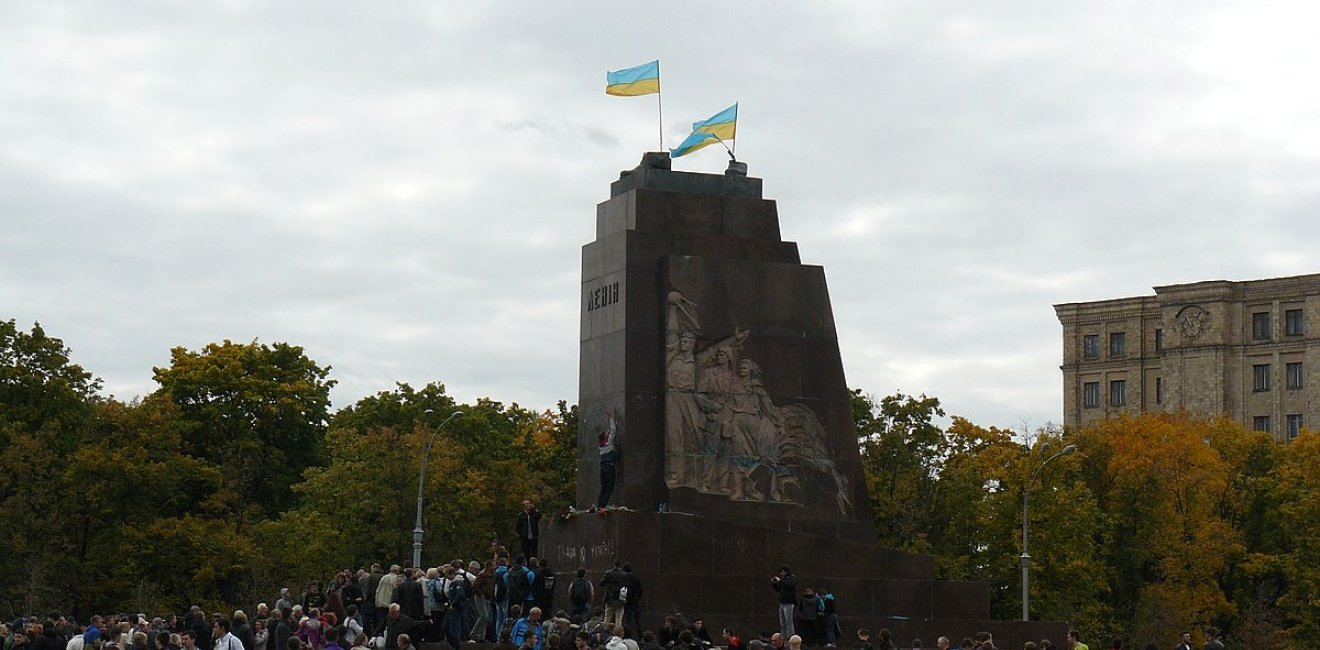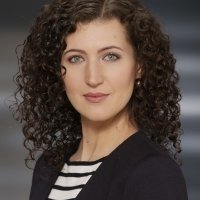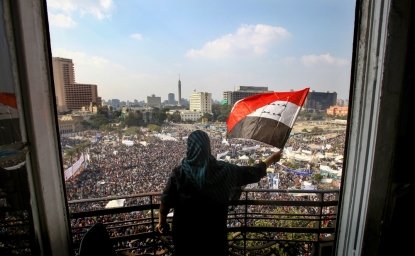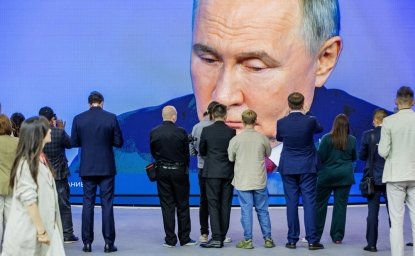Q: Describe your background and what brought you to the Wilson Center.
I am a historian. I was born in Kharkiv in the late 80s, during a time of great political upheaval and geopolitical change. In my school years, I was interested in history and actively participated in different contests in history (olympiad), which largely predetermined my choice of future profession. After the dissolution of the USSR, one of the major tasks of the young Ukrainian state was to create a distinct national historical narrative. Every new president of Ukraine contributed to this domain. As a result, history textbooks were constantly being rewritten. I remember how in my school years, we always lacked history textbooks. A history textbook published 5-7 years before was treated as “outdated.” The Ministry of Education recommended against their use for educational purposes. However, school libraries were not properly supplied with the new, “right” versions of history, and had to recycle those “outdated” ones. Once, I was preparing for the olympiad in history and borrowed an “outdated” history textbook from an older friend. I was told that some topics were better covered in this edition. I discovered there were completely different interpretations of key events such as WWII than those in the textbook we used in the classroom.
I became interested in nation-building processes and the politics of history (or more broadly, the politics of memory), which led me to my Master's Degree and Kandydat Nauk (PhD) research on images of the Bulgarian Revival and the politics of memory of socialist Bulgaria. I focused on uncovering the intellectual responses of Bulgarian mythmakers to challenges and dilemmas emerging from Muslim-Orthodox cultural interaction within Bulgaria, as well as contemporary political agendas related to a complex web of internal and external policies of the Bulgarian socialist government. I was excited to examine how the Bulgarian communists, with the aim of creating a totally new ideology for the future and building a classless anti-religious society, claimed a mythical past, appropriating two central myths from Bulgarian history – the myth of the Turkish yoke and the myth of the Bulgarian National Revival.
My current project applies a similar approach to the politics of memory and focuses on the memory landscape of post-Soviet Ukraine. The extremely prestigious Wilson Center together with the largest and oldest regional program for advanced research on Russia, Ukraine, and Eurasia, the Kennan Institute is the ideal place for me to continue my research.
Q: What project are you working on at the Center?
My project deals with the memory of the imperial past in post-Soviet Ukraine. Specifically, I am concentrating on the “hardware of memory,” i. e. monuments. Diverse territories of Ukraine in the past belonged to different empires – the Ottoman, Austro-Hungarian, and Russian empires. This naturally raised the question of how to treat imperial monumental heritage. Despite the clear ideological connotations that monuments relating to the Russian Empire’s past bear, for a long time their presence in urban spaces was almost unquestioned. In the context of ongoing conflict with Russian-backed separatists, Russian monumental legacy has become an object of heated debate. State memory actors have questioned to what extent, if any, Russian imperial figures have a place in Ukrainian history and cultural memory. I am paying particular attention to the interaction of various narratives in the monumental landscapes of post-soviet Ukraine of the past, such as official state memory and images of the imperial past promoted by local agents of memory. During my fellowship at the Kennan Institute, I am focusing on two cases representing Russian monumental legacy the cities of Kharkiv and Poltava.
Q: How did you become interested in your current research topic?
During my student years every day on my way to university, I passed a Lenin monument. The huge 20-meter tall statue was at the very center of the city on Svobody square where city celebrations and commemorations took place (including the commemoration of Victory Day). For my generation, the monument provided a convenient meeting point and as such was an integral part of the cityscape, devoid of ideological connotations. I was aware of Lenin’s role in the history of Ukraine, but like most Kharkovites, I did not ask myself what this monument meant for me and why it stood in the city center of Kharkiv in an independent Ukraine.
I had a moment of self-reflection when I was participating in a research project studying the commemoration of the 9th of May in post-socialist countries. I was leading interviews with locals, who came to the Svobody square on Victory Day, and suddenly realized how the monument of Lenin in Kharkiv held a wide range of different meanings for different people.
The Revolution of Dignity and the extensive decommunization of urban spaces that followed inspired me to undertake a project on the imperial past in the monumental landscapes of Ukraine. The all-too popular depiction of Ukraine as a decisively divided country – pro-European West and pro-Russian East with Soviet nostalgia – is itself a drastic oversimplification of the identities in post-Soviet Ukraine, which confuses rather than explains its memory culture.
Q: Why do you believe that your research matters to a wider audience?
Monuments are an integral part of urban space. The toppling of monuments to Lenin and the demolition of statues associated with the Communist regime in post-Maidan Ukraine demonstrated the symbolic power of monuments and their capacity to bring to life memories that seemed to have been settled. A closer look at the imperial past in the monumental landscapes of contemporary Ukraine with a special attention to local voices will allow us to better understand its influence on politics and society, as well as the peculiarities of the democratization processes and post-socialist transformations, including the democratization of memory culture itself.
Q: What is the most challenging aspect of your research?
The most challenging aspect of my research is its geography and scale. Even though I intend to limit my research to three cases, which represent several Ukrainian borderland territories (each contains at least two large cities, and include the former territories of the Russian Empire; the former Ottoman and Russian borderlands; and regions, which formerly constituted the Austro-Hungarian borderland), this is still quite an ambitious undertaking. It is difficult to know which cities and which monuments to include in my research and which could be left out – these questions are always a challenge for a researcher.
Q: What do you hope the impact of your research will be?
The project will impact policy makers and researchers. By looking not only at the national level, but also at the local level of memory politics, this research will fill the existing gap in scholarship in understanding the role of different agents of memory and identity discourses. Simultaneously, its outcomes will contribute to the formulation of relevant policies in Ukraine, for instance, as recommendations for the Ukrainian Institute of National Memory and the Ministry of Education and Science of Ukraine for creating a balanced historical narrative of the past.
The opinions expressed in this article are those solely of the authors and do not reflect the views of the Kennan Institute.






